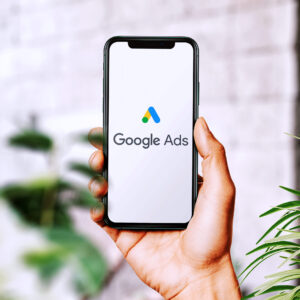The conversation about White Hat SEO and Black Hat SEO is one that every marketing team should have if only to make sure that your current practices won’t hurt your brand in the future. Understanding the difference can help you stick to search engine optimization tactics that are genuinely effective and helpful.
White Hat SEO and Black Hat SEO describe the types of practices that people employ to improve their rank on Google and other search engines. The goal of both is to help increase a website’s rank or placement on a search engine results page (SERP). The difference is that White Hat SEO practices are within the rules and should provide long-term benefits whereas Black Hat SEO practices are considered “cheating” and will be penalized when they are discovered.
Let’s discuss the difference between these two sets of practices and see which one you’ve been using. We’ll also give you some information on how to check your website and clean up your SEO so that you can stay on Google’s good side.

Employing White Hat tactics means you’re obeying the rules set by Google and other search engines. Think of these like “fair play” rules that are reinforced by the search engine’s algorithm. They don’t guarantee success, but they do reward legitimate organic search efforts.
White Hat SEO provides guidelines for things like keyword usage, content quality, and other details of your SEO strategy. These tactics are meant to provide the end user with high-quality content that is relevant to what they’re looking for. This respects the time and energy of both the sites producing the content and their audience, rather than rewarding websites that produce poor quality, spammy content for the sake of higher traffic.

Some examples of white hat best practices include:
Producing High-quality, Relevant Content: Create high-quality content that is made to educate, inform, or delight the audience. Combined with applicable keywords, these sites enjoy better rankings on a search results page and bring in better website traffic or quality backlinks.
Optimizing Your Web Pages For Specific Keywords: For each web page you create, your blog posts included, make sure you choose a SEO keyword that is applicable to the content. The main keyword should only be used about 3-4 times along with related variations to improve visibility on SERPs and engagement.
Developing A User-friendly Website With Good Load Speed: Make sure your website is easy to navigate and loads quickly. These factors will impact the user-experience and can improve your site’s rank with Google. Plus, who is going to sit and wait for a slow site to render?

Have you ever landed on a webpage that had little or nothing to do with what you’re looking for? Black Hat SEO may have been used to get you there and you have every reason to be upset about that.
Black hat tactics are deemed as such because they are dishonest or unfair ways to achieve a better ranking and increased website traffic, often at the expense of the audience’s time and attention. It’s like trying to win a race by cutting through the crowd—the finish line was crossed but the win wasn’t earned fairly.
While Black Hat SEO practices aren’t illegal, using them will only backfire. While these tactics may allow you to see higher ranking and clicks for a period after you launch them, eventually, the search engine(s) recognizes what was done, and the website will be penalized. The consequences of Black Hat SEO can range from lower SERP ranking to being completely removed from the index altogether, meaning that no one can see it.
These are a few examples of Black Hat tactics we’d suggest avoiding:
Duplicating Or Automatically Generating Content: Using automatically generated content or content that is duplicated is a bad idea. Anything deemed unoriginal or sub-par will be penalized or ignored.
Stuffing Keywords Into Content: Using a large number of high-volume keywords and packing them into web page content is known as keyword stuffing. Ultimately, it doesn’t improve page rankings and may even cause the page to be marked as spam.
Creating Doorway Pages That Offer Nothing Useful: A website full of pages that have almost nothing but links in them, known as doorway or gateway pages, proves to be overall useless and will be ignored or punished by most search engines.
Make Sure Your Site Content Is Original. Do you have duplicated location pages? Are some of your webpages using the same content with only a few small changes? Examine your site’s content to make sure each page is original and the only thing copy-pasted in is your contact information and your business name.
Make Sure Each Page Serves a Purpose or Offers Value. You don’t need novel-quality writing on every page, but you should make sure your site content is engaging, informative, and provides something of value to your audience. Do what you can to minimize filler content used to try to meet a word count goal.
Check the Validity of Pages You Link To. Do an audit of all the external links used throughout your website. First, figure out if the links are functional. Then, take a hard look at whether that link is necessary and if the source is a safe/reliable one. Linking to a spammy or less-than-user-friendly webpage can end up dragging your site down!
Clean Up Your Keywords. Do you have a page that is clearly stuffed with keywords? What about a page that you’ve discovered has hidden text to trick a search engine into a better ranking? Make sure each page targets one main keyword and doesn’t overuse the word’s variations throughout the page.
Clean Up Image Tags, Meta Tags, and Other Onsite SEO Details. Cleaning up image tags or meta details will make it easier for the search engine to “crawl” or review the page. Well-done technical SEO details will let the search engine know your website is user-friendly which will help its ranking along with making the content easier for your audience to find.
Struggling to figure out why your website isn’t ranking well? It could be due to Black Hat SEO practices that you don’t even know you’re using! Let our SEO experts give your site a look to find the right solutions that will get things back in shape.









